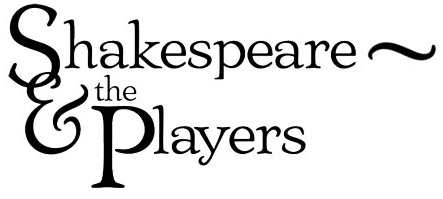400 years after his death, it’s no secret that Shakespeare continues to be the most popular dramatist in Western literary history. His plays have been performed over and over again across the world, for centuries. The performance of Othello that Abigail Adams viewed with disdain in 1785 wasn’t the same Othello you saw last week, or the one you read in high school. Every performance brings a new set of directors, producers, designers, audiences, and, of course, players to a fresh interpretation of the works of the Bard.
Our collection features images of productions of many of Shakespeare’s most memorable plays. We encourage you to browse through the postcards to view the variations in players and productions. The plays are organized according to the genres listed in Shakespeare first published volume, the 1623 First Folio—Comedy, History, and Tragedy. There are three more authoritative folios of Shakespeare (1632, 1663, 1685) which provide interesting counterpoints for comparison and discussion.
THE GENRES OF SHAKESPEARE:
Comedy may indeed provoke much laughter, but that isn’t the key component. One general sense of Elizabethan comedy is that it throws order into disarray at the beginning but concludes with some kind of union (marriage) and a reconstitution of social order. These include popularly performed plays such as As You Like It, A Midsummer Night’s Dream, and Twelfth Night.
Tragedy can be identified, in the most general sense, by the dramatic fall of a noble character from prosperity to misfortune or death due to some error in judgment, serious mishap, or character flaw. Shakespeare’s tragedies like Othello and Julius Caesar more or less follow this classical model but, in many ways, like Hamlet, they transcend, complicate, or dispel the model completely. Notice also how the titles of the Tragedy plays differ from those of the Comedies.
A Shakespearean History play is one which is based on the legendary events of English monarchs in the Middle Ages (King John) leading up to the Tudors (Henry VIII) as retold by contemporary chroniclers. Unlike the other genres, many of Shakespeare’s history play titles begin with “The Life of – .” Shakespeare did not fictionalize every single monarchy, just those which he, his audiences, and his patrons found most compelling and relevant. There are two grand sequences in his History plays: the First Tetralogy (Henry VI, Parts 1-3 and Richard III), and the Henriad (Richard II, Henry IV, Parts 1-2, Henry V). The First Tetralogy was written prior to the Henriad although it covers the chronological periods after the reign of Henry V.
Some plays, like The Tempest, Measure for Measure, The Winter’s Tale, and The Merchant of Venice are considered Comedies in the First Folio—they end in marriages—but are considered to be much more nuanced or “tragic” than a traditional comedy. These are often called “problem plays” or “tragicomedies.” Furthermore, plays such as Richard III and Richard II are called Tragedies in the Folio (and indeed might be read as such), but are listed under the History genre and are normally considered History plays.
For more information, Susan Synder’s chapter, “The Genres of Shakespeare’s Plays,” in The Cambridge Companion to Shakespeare offers a nuanced discussion of this contentious and lasting topic of interest.
Below is a shortcut to the play menus. You can also reach them under “The Postcards” tab above.
The postcards featured here are: (A) a 1911 production of Romeo & Juliet featuring Phyllis Neilson-Terry and Vernon Steel; (B) a 1904 production of The Tempest featuring Nora Kerin and Basil Gill; and (C) a scene from a production of Henry V starring Lewis Waller and Madge Titheradge.
